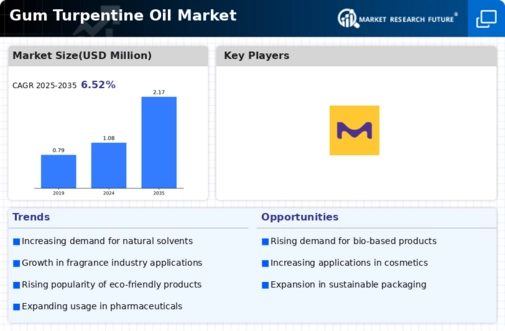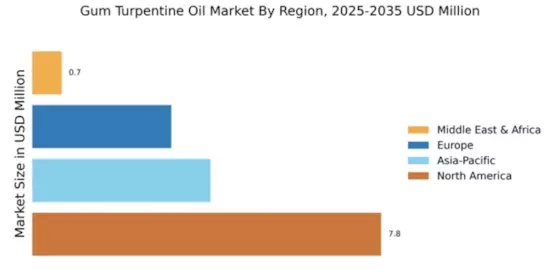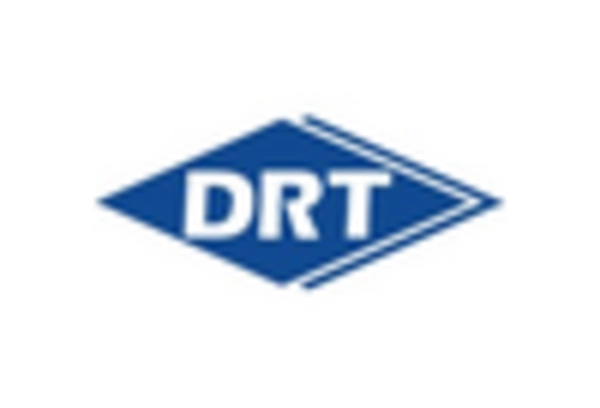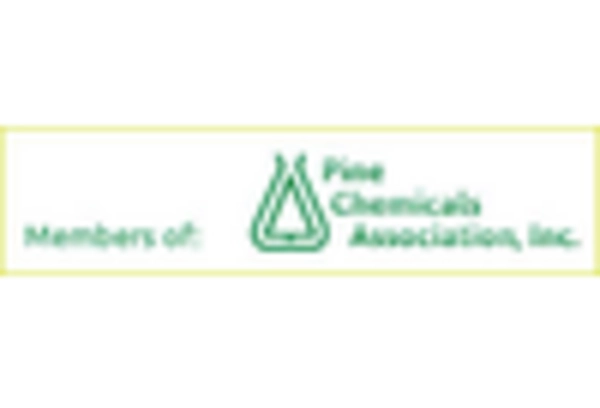Rising Demand in Paints and Coatings
The Global Gum Turpentine Oil Market Industry is experiencing a notable increase in demand from the paints and coatings sector. This growth is driven by the need for natural solvents and additives that enhance the performance of products. Gum turpentine oil, known for its ability to improve drying times and provide a smooth finish, is becoming a preferred choice among manufacturers. As the market evolves, the industry is projected to reach 1.08 USD Billion in 2024, reflecting a robust interest in eco-friendly solutions. This trend suggests that the Global Gum Turpentine Oil Market Industry will continue to expand, potentially doubling by 2035.
Surge in Demand for Natural Products
The Global Gum Turpentine Oil Market Industry is likely to benefit from the increasing consumer preference for natural and organic products. As awareness of synthetic chemicals' adverse effects grows, industries such as cosmetics and personal care are shifting towards natural alternatives. Gum turpentine oil, with its natural origin and beneficial properties, is gaining traction in formulations. This shift is indicative of a broader trend where consumers are willing to pay a premium for products perceived as safer and more environmentally friendly. Consequently, this could drive the market towards an estimated value of 2.17 USD Billion by 2035.
Growth in the Adhesives and Sealants Sector
The Global Gum Turpentine Oil Market Industry is witnessing growth due to the expanding adhesives and sealants sector. Gum turpentine oil serves as a vital ingredient in formulating various adhesive products, providing excellent bonding properties and enhancing performance. The increasing construction and automotive industries are contributing to the rising demand for adhesives, which in turn fuels the need for gum turpentine oil. As these sectors continue to grow, the market is expected to see a compound annual growth rate of 6.54% from 2025 to 2035, indicating a sustained interest in gum turpentine oil as a key component.
Regulatory Support for Sustainable Practices
The Global Gum Turpentine Oil Market Industry is supported by regulatory frameworks promoting sustainable practices. Governments worldwide are implementing policies that encourage the use of renewable resources and environmentally friendly products. This regulatory support is likely to enhance the market for gum turpentine oil, as it aligns with global sustainability goals. Companies that prioritize eco-friendly practices may gain a competitive edge, attracting consumers who value sustainability. As a result, the industry may experience growth, driven by both regulatory incentives and consumer demand for greener alternatives.
Technological Advancements in Extraction Processes
The Global Gum Turpentine Oil Market Industry is likely to benefit from technological advancements in extraction processes. Innovations in distillation and extraction techniques are enhancing the efficiency and yield of gum turpentine oil production. These advancements not only improve the quality of the oil but also reduce production costs, making it more competitive against synthetic alternatives. As manufacturers adopt these new technologies, the market could see an increase in supply, meeting the growing demand across various applications. This trend suggests a positive outlook for the industry, potentially leading to increased market share in the coming years.


















Leave a Comment